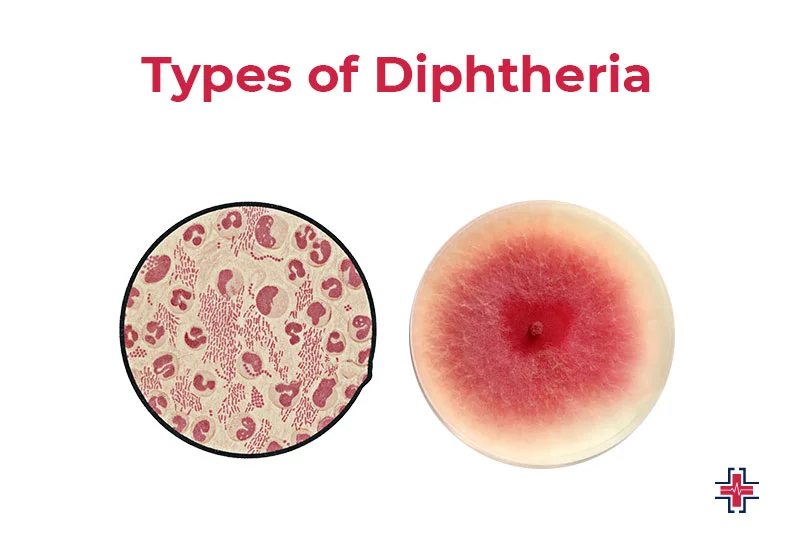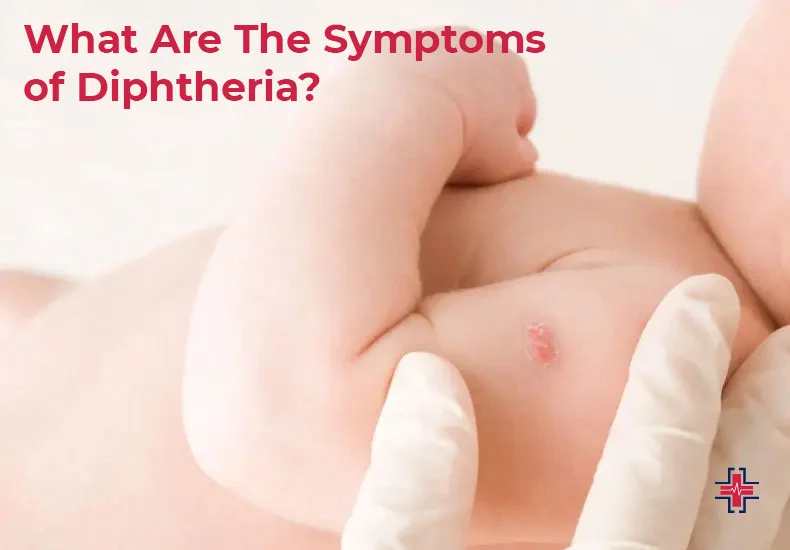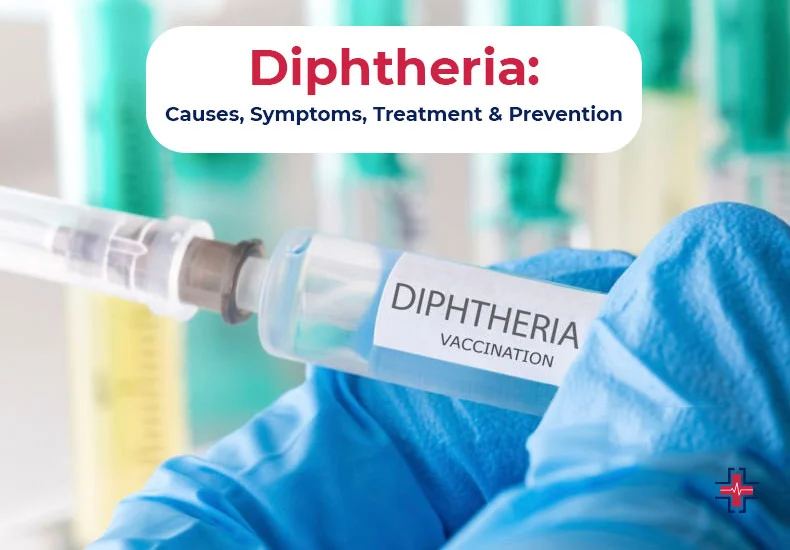The Centers for Disease Control and Prevention (CDC) states that the characteristic sign of diphtheria is a layer of yellowish material covering the back of the neck. Even though it’s rare in the US, more than 16,000 cases were documented worldwide in 2018.
If treatment is not received, 50% of cases of diphtheria may be fatal. Immunizations have significantly reduced the chance of contracting diphtheria in the United States. Medical providers may still recommend therapy for folks who have been close to someone who has it.
This article will define diphtheria and discuss its causes. It will also go over anticipated symptoms, potential therapies, and preventative measures against bacterial infections.
Additionally, this article will discuss potential problems and how medical professionals diagnose illnesses.
What Is Diphtheria?
The infectious disease diphtheria is caused by a bacteria called Corynebacterium diphtheriae. The toxin that the bacteria generates builds up in your throat, making it harder for you to swallow and breathe.
In addition to non-healing skin lesions that could coat in gray tissue, a person with diphtheria in a warmer climate may experience other side effects. This type of diphtheria, commonly referred to as cutaneous diphtheria, can sporadically affect populations residing in filthy and crowded areas in the United States.
Typically, the respiratory or integumentary systems are impacted. The integumentary system includes the hair, nails, and glands in addition to the skin’s three layers (hypodermis, dermis, and epidermis).
Typical symptoms include a mild fever, swollen glands, weakness, a thick, gray coating in the throat and nose, and throat pain. If the skin is impacted, ulcers and open sores could appear.
According to a 2019, this bacterium generates an exotoxin, which is a poison. This has the most serious diphtheria-related effects. The toxin prevents proteins from being synthesized, which results in tissue and cell death.
If the poison enters the bloodstream, it can damage the heart, kidneys, and nerves. An individual may experience both neuropathy and myocarditis, which is an inflammation of the heart muscles. Neuropathy, or damage to the nerves, can result in tingling, soreness, numbness, and muscle weakness.
Where Is Diphtheria Found?
In many parts of the world, diphtheria is still considered an endemic disease (an outbreak that is localized to a certain location). This includes the Middle East, Asia, the South Pacific, Haiti, Eastern Europe, and the Dominican Republic.
Is Diphtheria Still Around Today?
Since living circumstances have improved and children are regularly vaccinated against diphtheria, the disease is uncommon in the United States. In the past, diphtheria caused many deaths in the United States. The illness persists in other nations where immunizations are not administered. Therefore, there is still a chance that diphtheria might pose a threat to the United States.
Types of Diphtheria
Phtheria comes in two primary forms, respiratory and cutaneous varieties.

Cutaneous Diphtheria
The rarest type of diphtheria is called cutaneous diphtheria, and it can cause skin rashes, blisters, or sores anywhere on the body. In humid, tropical climates or highly crowded locations with poor living circumstances, cutaneous diphtheria is more common.
Classical Respiratory Diphtheria
The most common type of diphtheria, known as classical respiratory, can harm your tonsils, larynx, nose, and throat (vocal box). Your symptoms may vary depending on which body membranes are affected. There are instances when this disease is referred to as throat or pharyngeal diphtheria.
Diphtheria: How Does It Spread?
In addition to touching an object infected with bacteria, sneezing, coughing, and spitting can generate airborne droplets containing bacteria that can cause diphtheria. Furthermore, an infected person can transmit the disease by coming into contact with clothing that has been handled by another person or an open sore. It is possible to get diphtheria more than once.
What Causes Diphtheria?
Bacteria that stick to the lining of your respiratory system cause diphtheria. A poison produced by these bacteria harms the cells in your respiratory tissue. The tissue left behind becomes a thick, gray coating in two or three days. Your tonsils, throat, voice box, and nose tissues may get covered by this coating. It becomes difficult for the sick person to swallow and breathe.

Diphtheria can be transmitted by close physical contact with:
- Respiratory droplets from sneezing
- Coughing nasal and throat secretions
- Mucus and saliva-infected skin lesions
Any mucous membrane in another person can become infected when it comes from an infected individual.
What Are The Symptoms of Diphtheria?
Signs of diphtheria often appear within two to five days of the infection occurring. Some people don’t experience any symptoms, while others have mild symptoms that are similar to those of the common cold.

Common diphtheria symptoms include:
- Throat pain.
- Weakness or fatigue.
- Fever.
- Swollen neck glands.
- Problems breathing due to tissues obstructing your nose and throat.
- Difficulty swallowing (dysphagia).
- Nerve, kidney or heart problems (if the bacteria enters your bloodstream).
An infected person typically shows signs of diphtheria around two to five days after exposure. The length of time for symptoms to show can be anywhere from one to 10 days after exposure.
Diphtheria Treatment
Two parts make up the treatment meant to counteract the effects of the bacteria:
- Antitoxin: Anti-diphtheritic serum is another name for this substance. It strips the poisons from the bacterium. Physicians treat respiratory-system-affected diphtheria with the antitoxin.
- Antibiotics: Penicillin or erythromycin can kill the germs and prevent them from growing. Diphtheria affecting the skin and respiratory system can be treated with antibiotics.
Antitoxin therapy should be started as soon as possible, and doctors usually do so before the culture results are returned. Only toxins that have not yet attached themselves to the body’s cells and tissues are neutralized by the antitoxin.

After 48 hours of antibiotic use, people stop being contagious. Nonetheless, a patient must complete the entire course of antibiotics.
When a sick youngster has a sore throat and a gray membrane covering their tonsils and throat, doctors may suspect diphtheria. The diagnosis is validated by the growth of C. diphtheriae in a laboratory culture of throat membrane material. Additionally, physicians can have a tissue sample from an infected lesion examined in a lab to determine whether the patient has cutaneous diphtheria, the type of diphtheria that affects the skin.
Treatment starts as soon as a clinician suspects diphtheria, even before the findings of bacterial tests are known.
Diphtheria Medication
For cutaneous or respiratory diphtheria, penicillin or erythromycin are the suggested medications. The acellular pertussis vaccine (DTaP) and diphtheria toxoid (also known as tetanus and diphtheria toxoids) are part of the current immunization schedules for children.
Four vaccines can aid in preventing the spread of diphtheria:
- DTaP: Which offers defense against pertussis, tetanus, and diphtheria.
- DT: It offers tetanus and diphtheria protection.
- Tdap: It offers defense against pertussis, tetanus, and diphtheria.
- Td: It offers defense against tetanus and diphtheria.
For children under seven, the CDC suggests DtAP. At the following ages, infants should receive five doses of DTap:
- Two months
- Four months
- Six months
- 15 to 18 months
- Four to six years
Adults should have the Td or Tdap shot every 10 years, and those who are 11 to 13 years old should receive the Tdap vaccine.
Diphtheria Precautions
There are several vaccines available in the US that are meant to prevent diphtheria. Many of them provide concurrent immunity to multiple diseases, such as whooping cough, tetanus, and diphtheria. There are various options for when to receive the series of shots, which include booster shots after the first ones.
Generally speaking, vaccination side effects include fever, pain or redness where the shot was administered, and in rare instances, an allergic reaction to the vaccine itself.
What Are The Risk Factors For Diphtheria?
Children in the United States and Europe are routinely vaccinated against diphtheria, so the condition is rare in these places. However, diphtheria is still fairly common in developing countries where immunization rates are low. In these countries, children under age 5 and people over age 60 are particularly at risk of getting diphtheria.

People are also at an increased risk of contracting diphtheria if they:
- Aren’t up to date on their vaccinations
- Visit a country that doesn’t provide immunizations
- Have an immune system disorder, such as AIDS
- Live in unsanitary or crowded conditions
How Does Diphtheria Affect The Body?
The particular signs and symptoms of diphtheria are determined by the particular bacterial variety and body area involved. Diphtheria can cause respiratory system disturbances and skin infections.
The CDC states that if it has affected the skin, open sores and ulcers may develop. Serious illness is not often the result of this. The incubation period is typically two to five days long, but it can go up to ten days.
Diphtheria in the respiratory system can occur gradually and cause:
- Unable to swallow painful throat weakness
- swelling of the neck glands
- A low-grade fever, loss of appetite
- Hoarseness if the larynx is impacted by the illness
Within two to three days, the released poison obliterates the person’s respiratory system’s healthy tissue. This results in a thick, gray film covering the nose or throat. This layer is known to physicians as a pseudomembrane.
If the membrane reaches the larynx, the likelihood of hoarseness and a barking cough increases, as does the danger of complete airway obstruction. If the membrane continues along the respiratory system, it can eventually reach the lungs.
What Are The Complications Associated With Diphtheria?
If the toxin enters the circulation and harms other essential tissues, potentially fatal consequences could arise.
Among the possible issues are:
- Airway obstruction
- Myocarditis
- Arthritis
- Paralysis from kidney failure
Diphtheria can be deadly in certain situations. 5–10% of those who get the virus will pass away overall.
FAQs
What is the definition of cutaneous diphtheria?
a typically mild case of diphtheria marked by skin infection caused by the corynebacterium diphtheria and the development of a persistent, shallow ulcer that is occasionally accompanied or bordered by a bulla. [from NCI]
If I have diphtheria, what should I anticipate?
Diphtheria treatment is not always effective. Yet, about 10% of patients may not survive treatment. One in two individuals may die if they receive no treatment. The best option is to be vaccinated. Make an appointment with your healthcare practitioner if you are not immunized.
What is the duration of diphtheria?
It often takes two to three weeks for medication to start working for persons with diphtheria. Any skin ulcers may not completely heal for two or three months, and any scarring may last a lifetime.
Is diphtheria Curable?
Yes. When treated immediately, diphtheria is managed successfully with antitoxins and antibiotics. Vaccination can prevent diphtheria altogether.
Summary
A bacterial illness called diphtheria can have serious side effects, including death. Thanks to the availability of vaccines that aid in prevention, the ailment is now uncommon in the United States.
Diphtheria is characterized by a thick, gray coating at the back of the throat, weakness, sore throat, enlarged neck glands, and slight fever.
A person may get open sores and ulcers if they have diphtheria. Treatment for diphtheria must begin right away because it is a dangerous and potentially fatal condition. Make an appointment with the healthcare provider of the ER of Mesquite – Emergency Room as soon as possible if you haven’t received a vaccination against diphtheria or if you’re unsure if your shots are current.
